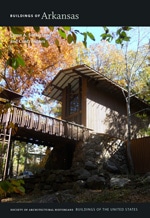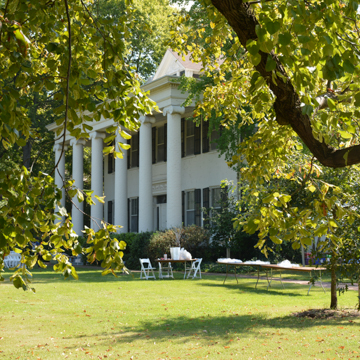Albert Pike came to Little Rock from Van Buren to serve as associate editor of the Advocate in the early 1830s. He was also a legal advocate for Native Americans. When he constructed his two-story Greek Revival house on twelve lots on the outskirts of town in 1840, he considered many of the neighboring structures “shingle palaces,” devoid of architectural distinction. In contrast, Pike’s house, with its monumental porch carried on six two-story Ionic columns, was the very symbol of refinement and contemporary architectural beauty. During the Pike family’s residency from 1840 to 1871, the house was surrounded by landscaped gardens and had a variety of outbuildings, none of which survive. In 1871 Pike deeded the house to his daughter, Lilian, and in 1873 she rented the house to the Arkansas Female College until 1886, when she sold it to Lou Krause, who in 1889 transferred ownership to her brother-in-law John G. Fletcher and moved the school out.
The Fletchers’ daughter Adolphine and her husband David Terry occupied the house from 1910 to 1977. During these years various additions were made to the house and some removed. Adolphine was one of the first female college graduates in Arkansas, and as an advocate for social change, she established a juvenile justice system in Arkansas and organized the School Improvement Association, which became the Parent Teacher Association. During the Terrys’ residency, the house’s interior was redesigned in the Colonial Revival style, and a carriage house, which still remains on the property, was constructed. Adolphine and her sister, Mary Drennan, deeded the estate to the City of Little Rock in 1964 for the use of the Arkansas Arts Center. The house is used for art exhibitions and other cultural events.















